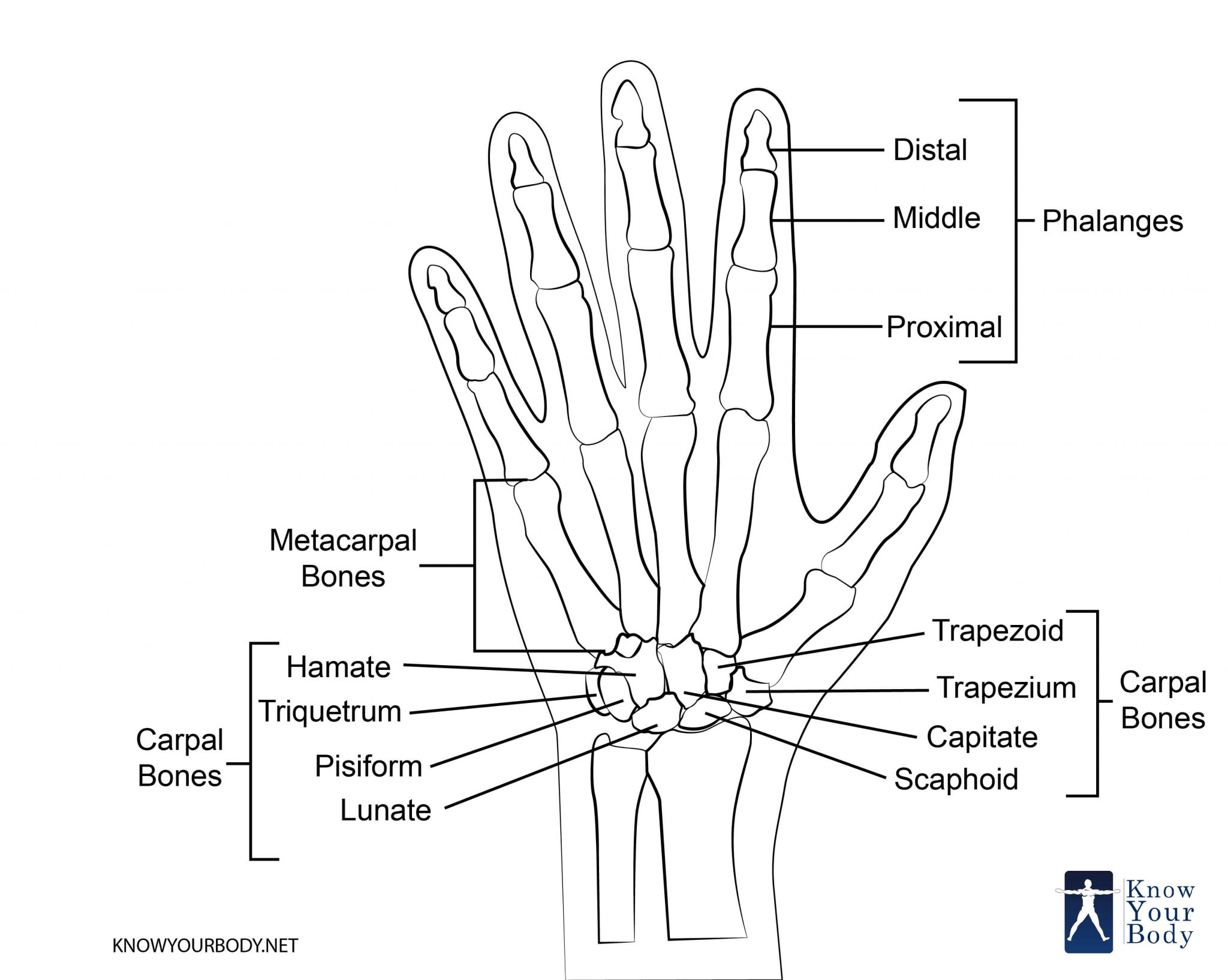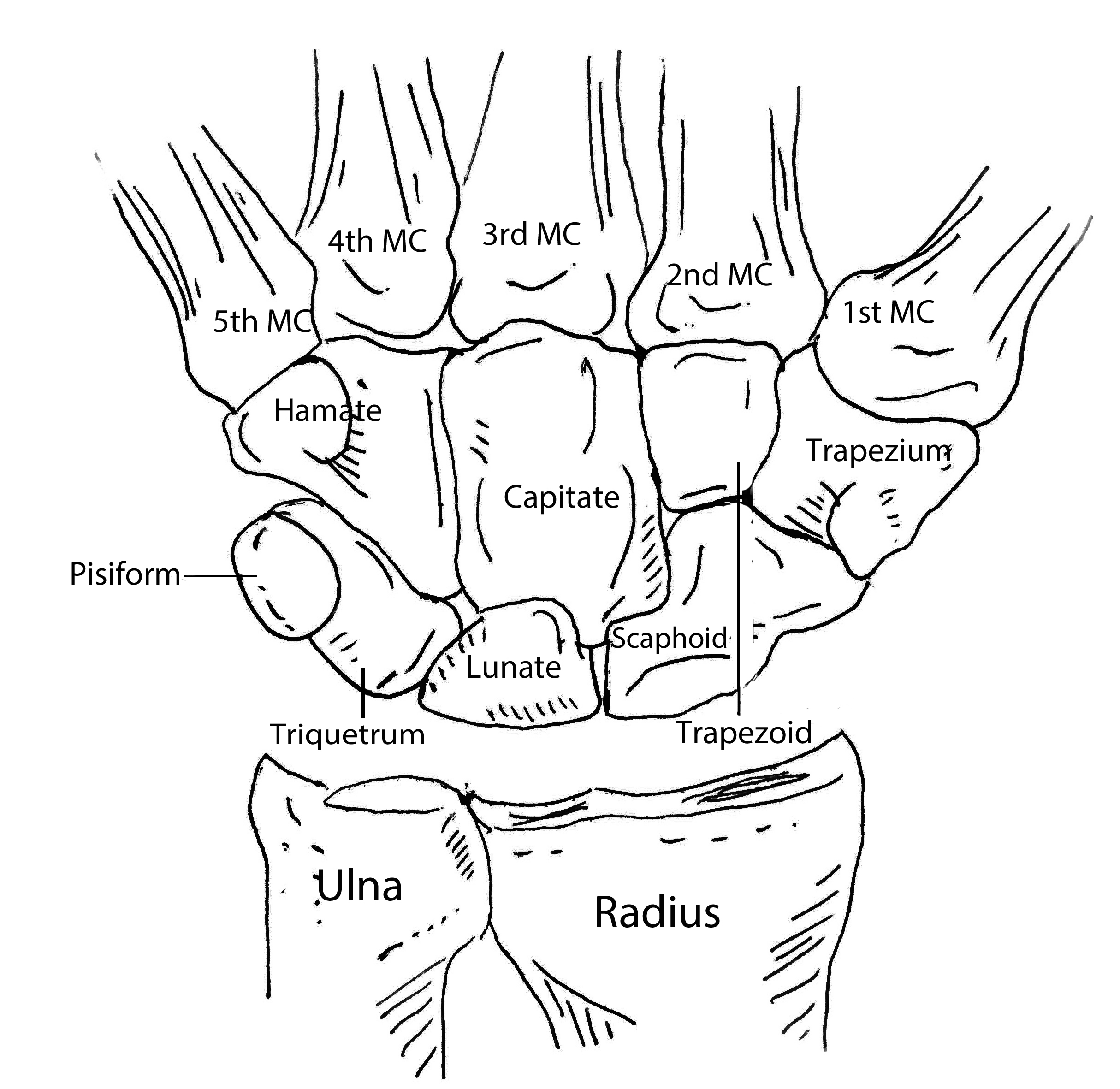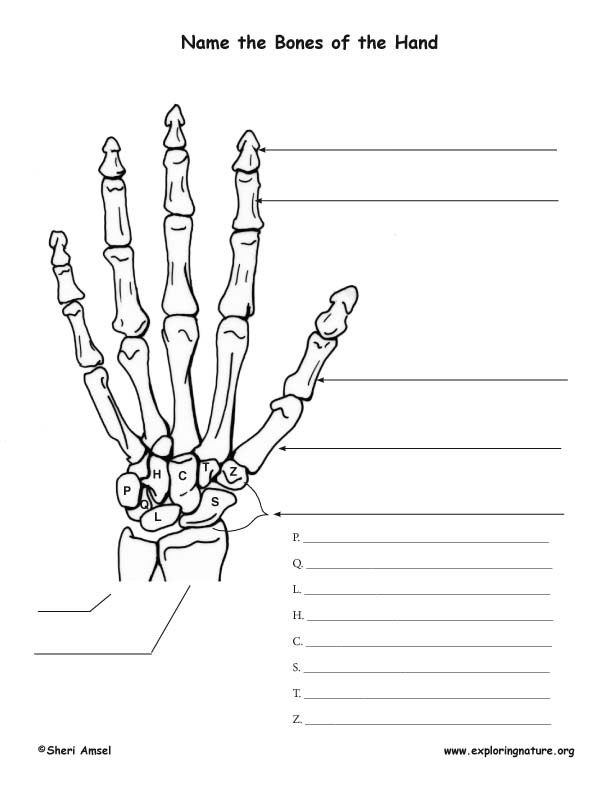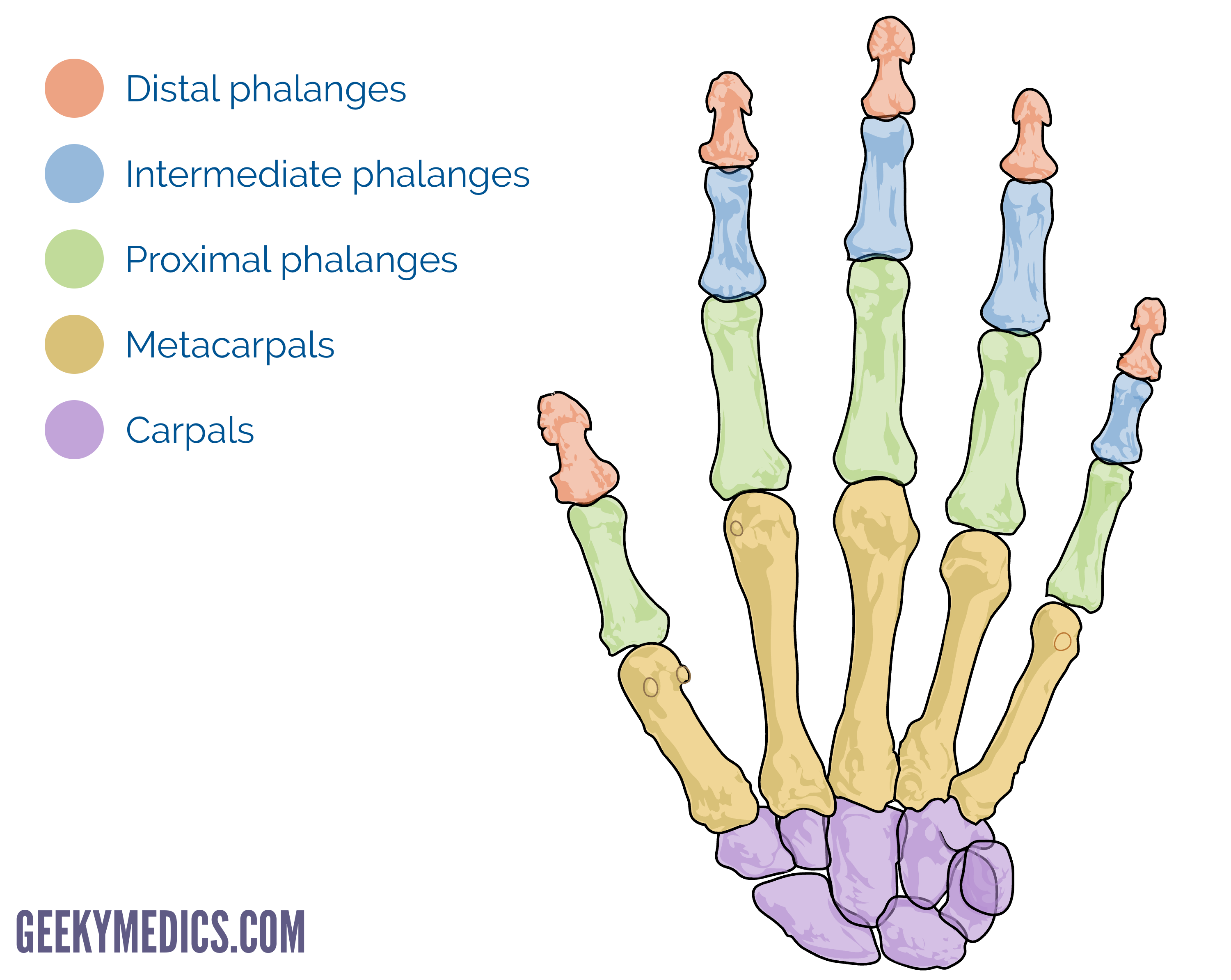
Hand Bones Anatomy, Structure and Diagram
Popular skeletal system quizzes : 1 - the skeleton: test your knowledge of the bones of the full skeleton. 2 - the axial skeleton: How about the bones of the axial skeleton?. 3 - the skull: Do you know the bones of the skull?. 4 - the spine: Test your knowledge of the bones of the spine. 5 - the hand: can you name the bones of the hand?. 6 - the appendicular skeleton: learn the bones the arms.
.jpg)
Hand Bone Diagram resource Imageshare
The eight bones of the wrist are:. Scaphoid: This bone is on the thumb side of the hand near the radius.; Lunate: This bone rests between the scaphoid and triquetrum in the proximal row, near the.

Wrist Joint AnatomyBones, Movements, Ligaments, Tendons Abduction, Flexion
The hand is the most complex region of the upper limb skeleton. It consists of 27 bones arranged into three groups. From proximal to distal, these are: The carpal bones, which comprise the root of the hand. The metacarpal bones, which compose the bony skeleton of the palm. The phalanges, which comprise the skeleton of the fingers.

Hand bones anterior view Diagram Quizlet
While there are 206 bones in the human body, only three of them are in the arm, between the shoulder and wrist. The arm bone names are the humerus (upper arm), radius (lower arm), and ulna (lower.

Hand Anatomy Overview Bones, Blood Supply, Muscles Geeky Medics
Those are flexion, extension, abduction, and adduction of the hand. Take this specially designed quiz to test your knowledge about the hand and wrist. It specifically focuses on bones, muscles (including attachments, innervation, functions), arteries, veins, and nerves. Custom Quiz: Wrist anatomy Start quiz.

Diagram Of Hands And Label Labeled Anatomy Of Hand Label The Hands Bones Diagram Human photo
Introduction. Anatomically, the hand is defined as the region of the upper limb distal to the wrist.. The base of the hand contains 8 bones, each known as a carpal bone.The palms of the hands each contain 5 metacarpal bones.The digits contain the phalanges.. The skeleton of the hand contains 27 bones which can be divided into three groups: The carpus (the wrist): comprised of 8 carpal bones

Bones of the Hand Labeling Page
There is a great deal of physiologic variation between individuals in the morphology of the hand bones. One tool used to discuss the variance in hand anatomy is the digit length ratio of the second to the fourth digit, otherwise referred to as the 2D to 4D ratio. This number has been demonstrated to be 0.98 among the general population but.

Hand Anatomy and Function Bone and Spine
Anatomy of the Hand. The hand is composed of many different bones, muscles, and ligaments that allow for a large amount of movement and dexterity. There are 3 major types of bones in the hand itself, including: Phalanges. The 14 bones that are found in the fingers of each hand and also in the toes of each foot.

Finger Bones JOI Jacksonville Orthopaedic Institute
Hand, grasping organ at the end of the forelimb of certain vertebrates that exhibits great mobility and flexibility in the digits and in the whole organ. It is made up of the wrist joint, the carpal bones, the metacarpal bones, and the phalanges. Learn more about the hand in this article.
Body Anatomy Upper Extremity Bones The Hand Society
Phalanges of hand (Phalanges manus) The phalanges of the hand are the group of small bones that comprise the bony core of the digits (fingers) of the hand.Even though the phalanges are small in size, they are classified as long bones because of their structural characteristics; each phalanx consists of a shaft, distal head and a proximal base.. There are fourteen phalanges in each hand; each.

Bones of the Hand Carpal Bones Metacarpal bones Geeky Medics
The bones of the hand provide support and flexibility to the soft tissues. They can be divided into three categories: Carpal bones (Proximal) - A set of eight irregularly shaped bones. These are located in the wrist area. Metacarpals - There are five metacarpals, each one related to a digit. Phalanges (Distal) - The bones of the fingers.

Bones of the Upper Limb Anatomy and Physiology I
Hand, wrist, and arm bones quiz for anatomy and physiology! When you are taking anatomy and physiology you will be required to know the location of the hand, wrist, and arm bones. This quiz will test your knowledge on how to identify these bones (trapezium, trapezoid, hamate, pisiform, triquetral, capitate etc.)

The bones of the hand and wrist
Triquetrum. Pisiform. Trapezium. Trapezoid. Capitate. Hamate. Together, these bones connect the lower arm to the hand and fingers as the proximal carpal bones articulate with the radius and ulna to form the wrist joint. These bones articulate with each other, allowing wrist movement so we can perform common daily activities with our hands.
.jpg)
Hand Bone Diagram resource Imageshare
Ulna. The ulna is one of the two forearm bones and is on the small finger side of the forearm. Unlike the radius, this bone does not twist, so when the hand changes position, the ulna is always in the same position on the inside part of the forearm. Like the radius, the ulna has joints at the elbow and wrist.

Bones of the hand, posterior view with labels Appendicular Skeleton Visual Atlas, page 14
Try and guess all the hand bones . There is a printable worksheet available for download here so you can take the quiz with pen and paper.. From the quiz author

bones diagram Graph Diagram
Phalanges: The individual bones that make up the segments of your fingers and thumb. Sesamoids: Small bones embedded in your tendons that help them move smoothly. Wrist bones. Your wrist is a complex joint made of eight bones that are arranged into two rows. The proximal row (on the back of your hand, closest to your forearm) includes the.